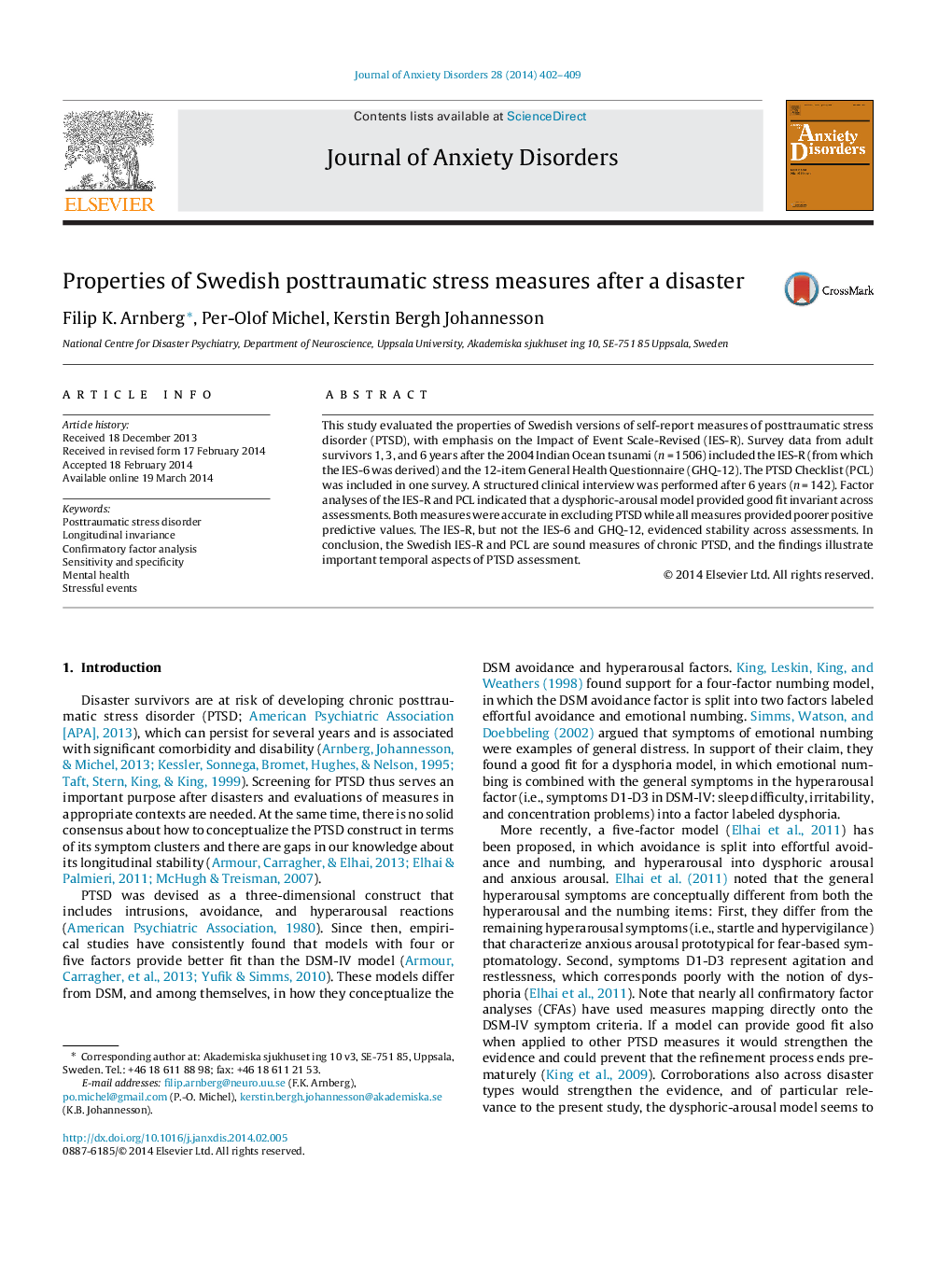| Article ID | Journal | Published Year | Pages | File Type |
|---|---|---|---|---|
| 909356 | Journal of Anxiety Disorders | 2014 | 8 Pages |
•The construct of chronic PTSD generally shows temporal invariance.•The dysphoric-arousal model provided better fit than four- and three-factor models.•The Swedish IES-R and the PCL work well as measures of chronic posttraumatic stress.
This study evaluated the properties of Swedish versions of self-report measures of posttraumatic stress disorder (PTSD), with emphasis on the Impact of Event Scale-Revised (IES-R). Survey data from adult survivors 1, 3, and 6 years after the 2004 Indian Ocean tsunami (n = 1506) included the IES-R (from which the IES-6 was derived) and the 12-item General Health Questionnaire (GHQ-12). The PTSD Checklist (PCL) was included in one survey. A structured clinical interview was performed after 6 years (n = 142). Factor analyses of the IES-R and PCL indicated that a dysphoric-arousal model provided good fit invariant across assessments. Both measures were accurate in excluding PTSD while all measures provided poorer positive predictive values. The IES-R, but not the IES-6 and GHQ-12, evidenced stability across assessments. In conclusion, the Swedish IES-R and PCL are sound measures of chronic PTSD, and the findings illustrate important temporal aspects of PTSD assessment.
